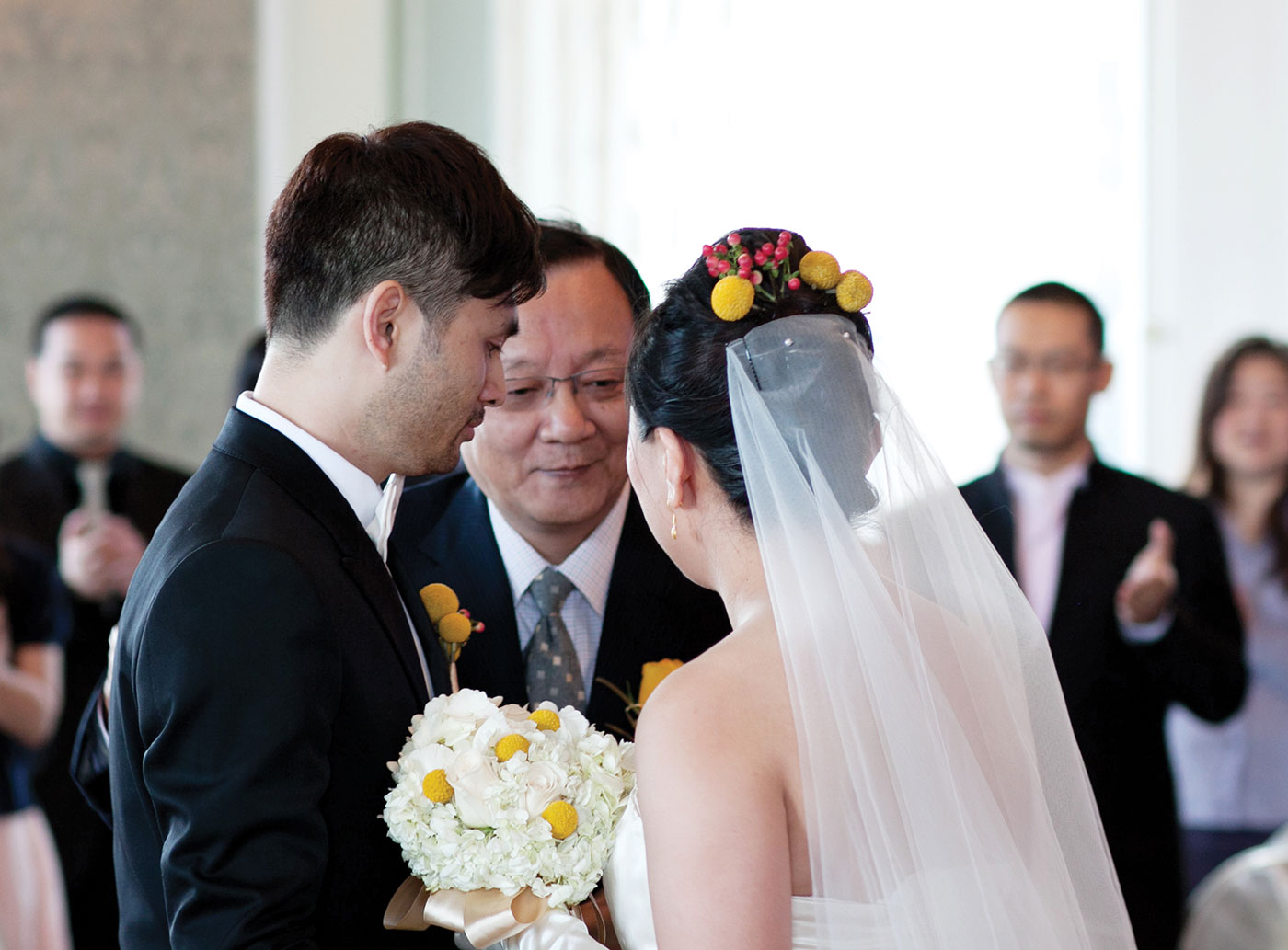This past fall was a very popular one for Chinese weddings, thanks to the extra lucky number nine available on 9/9/2019.
“It’s very common for Chinese couples to pick a wedding date
based on numerology and lucky numbers,” says Jingjing Zheng, founder of Bridges Creative, an
agency specializing in Chinese marketing. The pronunciation of “nine” in Chinese is similar to the pronunciation for “longevity,” and incorporating the number into your wedding date is thought to ensure your marriage is forever. Couples might also look for lucky dates
according to the lunar calendar, or may even honour the traditional convention of marrying
in the early evening.
Perhaps equally as important as lucky numbers is incorporating the colour red. “It’s traditional for both men and women to wear red clothing and gold accents,” Zheng says. “Red is considered lucky and ceremonial, gold means luck and wealth. Cantonese families will give gold instead of money as gifts and, typically, brides receive a lot of gold jewellery that they wear as part of their outfit. I had a lot of bracelets on my wedding day.”
While a Chinese bride in
Edmonton might choose to wear a white dress, Zheng says that almost every bride would still incorporate
a red qipao (dress) in some fashion — likely during the tea ceremony, one of the most significant parts of
a Chinese wedding, where the couple pays their respects to their ancestors and thanks their parents by serving them tea.
“While the tea ceremony traditionally only serves the groom’s parents in the morning before the wedding, nowadays it’s common for both sides’ parents to attend after the
wedding ceremony, usually to recognize each other’s parents as their own.”
Next to tea, rice wine is the most important beverage served during marriage celebrations, and is important in many Chinese rituals. At the end of the ceremony, it’s traditional for the couple to interlock arms, hold each other’s cups and drink to officially signify their marriage.
